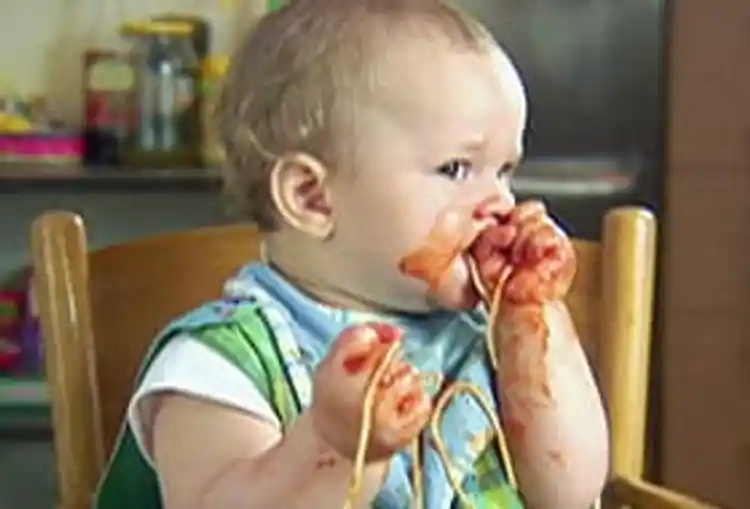When is Baby Ready for Solid Foods?

Hide Video Transcript
Video Transcript
Dr. Kimberly Manning
Introducing solid foods is a major milestone in an infant's first year of life. We offer insights on making this a smooth transition step by step. Dr. Kimberly Manning (cont.)
It's a definite photo op – baby's first spoonful of food! When are infants ready to start the switch to solids? Usually midway through the first year – though mother's milk or formula still will provide the main source of nutrients. Dr. Kimberly Manning (cont.)
Wait to start solids until baby is at least four months old. That's because the first step is developmental: the tongue thrust reflex babies are born with doesn't begin to disappear until four to six months – allowing them to accept soft food with less of an impulse to push it away. Check for signs that baby is ready
an interest in your food; an ability to take food into mouth and hold it there; the ability to swallow without spitting or sputtering; and a desire for more and more milk without feeling satisfied. Dr. Kimberly Manning (cont.)
Ease the transition by giving a little breast milk or formula before and after a small solid food feeding. This ensures baby gets enough to eat – and establishes a link between the satisfaction of sucking – and the new realm of eating. Dr. Kimberly Manning (cont.)
While scheduling mealtime isn't necessary, it is important to create a predictable pattern for baby to follow: sitting upright with support; taking small bites from the spoon; resting in between; and stopping when full. Dr. Kimberly Manning (cont.)
Don't force the issue if baby is fussy or fidgety. Realize that mealtime should be enjoyable for both parent and child. If it's just not working out, relax. Go back to bottle or breastfeeding exclusively for a week or so, and then try again. But resist the temptation to put solid foods in the bottle. This can dangerously increase food intake and lead to excessive weight gain. Dr. Kimberly Manning (cont.)
Support baby securely in your arms until it's time for a high chair. Those with removable trays with rims make feeding – and cleaning easier. Dr. Kimberly Manning (cont.)
Baby should wear a bib at mealtime. It's also a good idea to cover yourself – and the area around you. Despite best efforts, most of the food from these first meals will end up all over the floor, you or the baby. Hey, another photo op! At this age, messes are acceptable – it's all part of the process. So for now, breathe deep and take it one tiny spoonful at time – step by step. For WebMD, I'm Dr. Kimberly Manning. 
